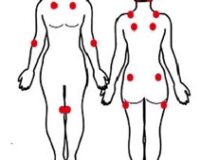
Pilates for Wellbeing
Just to be clear, Pilates does not involve any torturing (despite the studio being named the “torture chamber” at times)!
So, what is Pilates? Pilates is an exercise system developed in the early 20th century by a man called Joseph Pilates. It is based around “contrology” (to control your body) and puts emphasis on alignment, breathing, core stability, co-ordination and balance.
Many people ask, “Why should I do Pilates? Why will it be more beneficial for me than going to the gym?” Firstly, Pilates is not just about building strength, as most gym work is, but let me answer this question by going through more of the benefits of Pilates:
- Improved posture and postural awareness
- Increased flexibility – both spinal flexibility, and peripheral
- Improved core stability (the “core” being “that tummy region”)
- Improved control and strength of spinal and peripheral musculature
- Correcting muscle imbalances
The main populations that we prescribe Pilates for are people in pain, or with a history of pain. This can include:
- People recovering from an acute episode of pain. e.g. Lower back injury
- People with sedentary jobs. e.g. Office workers
- Post-pregnancy
- Pre-operative & post-operative muscle building/toning
- People wanting to improve general fitness/strength/flexibility
- People who find it difficult to exercise using other methods
And, most importantly, people wanting to PREVENT future episodes of pain or injury.
The major benefit of doing Clinical Pilates (i.e. Pilates under the guidance of a trained physiotherapist) is that the program is individualised. Everyone is different, everyone has different aims, and areas to focus on – therefore, an individualised program is going to be the most helpful in achieving your specific aims.
With this in mind, before we commence your Pilates program at Therapia, we go through a full assessment of your injuries, strengths, and weaknesses. We will come up with a list of specific aims for you, which will also incorporate anything needed to improve your endurance for work/sports/recreational requirements.
To use an example, Mary is an office worker and spends 6-7 hours per day at a computer. At work, she has constant discomfort between her shoulder blades, neck pain and often headaches. In her past history, she’s also had a lumbar disc bulge, and has moderate osteoarthritis of her knees.
There are many different exercises that will be suitable for Mary, in order to target:
- Posture and postural musculature
- Postural awareness
- Muscle imbalances – e.g. turning off unwanted muscle activity and turning on those that we want to work more
- Improved spinal flexibility, particularly between the shoulder blades
- Improved upper limb function and strength
- In addition, the exercises will be gentle on her knees and so will not aggravate her knee arthritis.
I would expect Mary to feel the benefits of Pilates within only a few weeks (2-3 weeks), if practiced with consistency. Following this, I would expect that Mary can prevent her pain from returning, but also have methods to self-treat it if it does get aggravated.
So, if you too have problems that you’d like us to help you sort out, please call us on (08) 8221 5011, and we can start you on the road to recovery!
References:
Lop C, Hancock M, Maher CG, Ostelo RWJG, Cabral CMN & Menzes Costa LD 2012, ‘Pilates for low-back pain (protocol)’, The Cochrane Library, Issue 12, pp.1-21.
Wells C, Kolt G & Bialocerkowski A 2012, ‘Defining Pilates Exercise: A Systematic Review’, Contemporary Therapies in Medicine, Vol 20, pp.253-262.
Picture courtesy of shoeboxblog.com
Book Appointment




